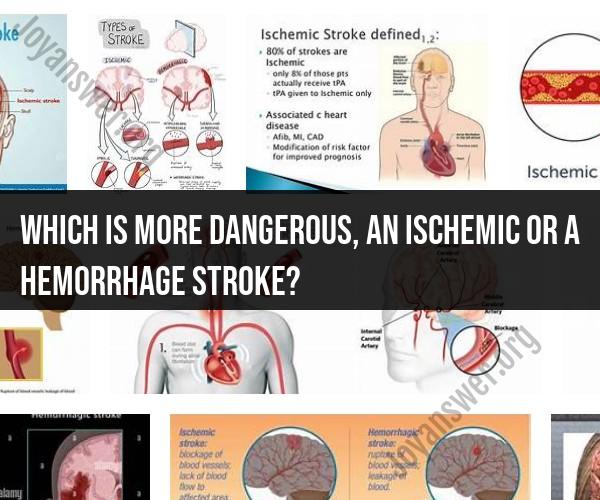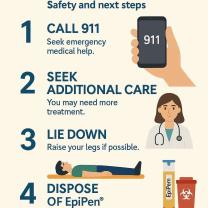Which is more dangerous, an ischemic or a hemorrhage stroke?
Both ischemic and hemorrhagic strokes can be dangerous, but they have different characteristics and risks associated with them. The severity and outcome of a stroke depend on various factors, including the type, location, and size of the stroke, as well as the promptness of medical intervention. Here's a comparison of the dangers associated with ischemic and hemorrhagic strokes:
Ischemic Stroke:
Cause: Ischemic strokes are caused by a blockage or clot in a blood vessel supplying blood to the brain. The clot prevents oxygen and nutrients from reaching brain cells, leading to cell damage and potentially death.
Prevalence: Ischemic strokes are more common than hemorrhagic strokes, accounting for the majority of all stroke cases.
Danger: Ischemic strokes can be less immediately dangerous than hemorrhagic strokes. However, they can still cause significant damage and have the potential to be life-threatening. The severity depends on factors such as the size of the blocked vessel and the brain area affected.
Treatment: Treatment for ischemic strokes typically involves dissolving or removing the clot to restore blood flow to the brain. Medications like tissue plasminogen activator (tPA) or mechanical thrombectomy are commonly used treatments.
Hemorrhagic Stroke:
Cause: Hemorrhagic strokes occur when a blood vessel in the brain ruptures or leaks, leading to bleeding within the brain tissue (intracerebral hemorrhage) or into the space around the brain (subarachnoid hemorrhage).
Prevalence: Hemorrhagic strokes are less common than ischemic strokes but tend to be more severe.
Danger: Hemorrhagic strokes are often considered more immediately dangerous due to the sudden release of blood into the brain or surrounding areas. The bleeding can increase intracranial pressure and compress brain tissue, potentially leading to rapid neurological deterioration.
Treatment: Treatment for hemorrhagic strokes involves controlling bleeding and reducing intracranial pressure. Surgical intervention may be necessary to repair the damaged blood vessel or remove blood clots. The specific treatment approach depends on the type and location of the hemorrhage.
In summary, the danger associated with a stroke depends on various factors, and both ischemic and hemorrhagic strokes can be life-threatening. Immediate medical attention is crucial for either type of stroke to minimize brain damage and improve the chances of recovery. The long-term impact and prognosis also vary widely based on individual factors and the extent of brain damage. Stroke prevention through risk factor management (e.g., controlling high blood pressure, managing diabetes, and maintaining a healthy lifestyle) is essential in reducing the risk of both types of strokes.











